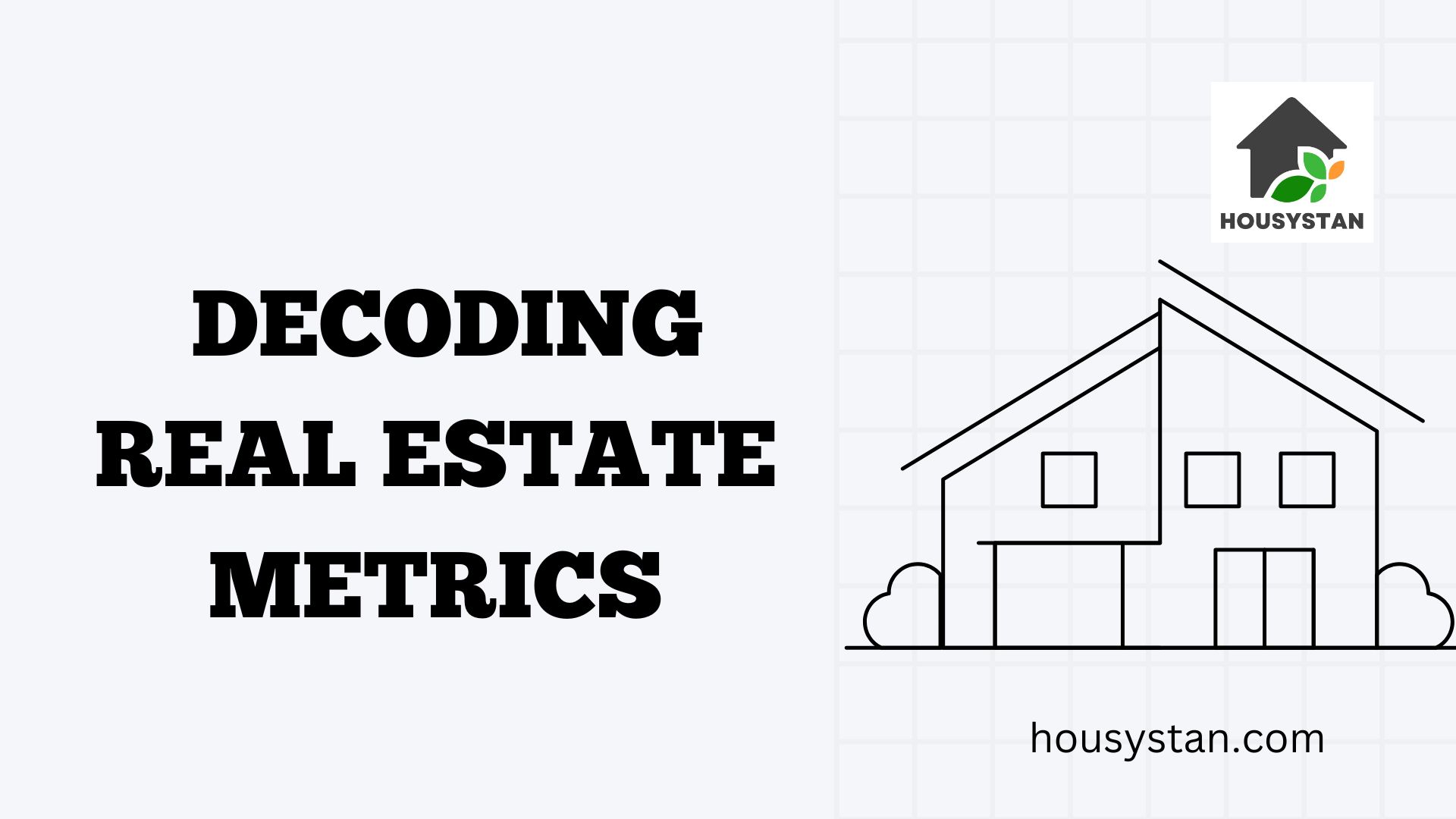Decoding Real Estate Metrics
Read latest blogs and articles from Housystan

The Information mentioned here was last updated on:
2/12/2025Decoding Real Estate Metrics: A Comprehensive Guide for Beginners
Real estate markets are often seen as a maze of numbers and percentages, leaving many prospective buyers, sellers, and investors scratching their heads in confusion. Understanding the key metrics used in real estate can transform this complex world into a more approachable and navigable space. With the right knowledge, you'll be better equipped to make informed decisions whether you're buying your first home or looking to invest in rental properties. This guide will walk you through some of the most important real estate metrics in straightforward, easy-to-understand language.
Understanding Common Real Estate Metrics
- Verified Tenants/Buyers
- Unlimited Property Listing
- Zero subscription/charges fee
1. Market Value and Appraised Value
The terms "market value" and "appraised value" are often used interchangeably, but they represent different things:
- Market Value: This is the estimated amount for which a property should sell based on current market conditions. It's influenced by several factors, including location, market trends, and comparable sales in the area.
- Appraised Value: Determined by a professional appraiser, this figure is used by lenders to assess a property’s worth before approving a mortgage. The appraised value ensures that the lender isn't providing a loan amount higher than the property's actual value.
2. Price Per Square Foot
Price per square foot is a useful metric when comparing homes that vary significantly in size:
- Calculation: Divide the asking price of a home by its total square footage.
- Usage: This comparison tool helps you evaluate the cost efficiency of a property, providing a clearer picture of what you’re paying relative to the space you’ll get.
3. Days on Market (DOM)
This metric reveals how long a property has been listed for sale:
- Implication: A high DOM can indicate a less desirable property or one that is overpriced. Conversely, a low DOM suggests high demand, meaning that similar properties might sell quickly.
4. Inventory Levels
Inventory levels reflect the number of available properties within a specific market:
- Significance: Low inventory can indicate a seller’s market, characterized by high demand and potentially higher prices. High inventory suggests a buyer’s market, where buyers have more choices and potentially more negotiating power.
5. Real Estate Appreciation
Understanding appreciation is crucial for investors and homeowners who are concerned about the future value of their properties:
- Definition: Appreciation denotes the increase in a property’s value over time, influenced by factors such as local economic conditions, infrastructure developments, and market trends.
- Benefit: Properties in areas with high appreciation rates can yield significant returns over time.
Key Metrics for Real Estate Investors
6. Cap Rate (Capitalization Rate)
The Cap Rate is a fundamental metric in evaluating rental property investments:
- Calculation: Divide the property’s annual net operating income (NOI) by its current market value.
- Usage: A higher cap rate can mean a potentially higher return on investment, but it may also imply greater risk.
7. Cash on Cash Return
This is another vital metric for investors to assess the profitability of their investments:
- Calculation: This is derived by dividing the annual before-tax cash flow by the total cash investment.
- Consideration: Cash on cash return focuses on the cash flow’s efficiency, highlighting how well an investment generates cash relative to the initial amount put down.
8. Gross Rent Multiplier (GRM)
The GRM is a simplistic way to evaluate rental properties, focusing on the relationship between purchase price and rental income:
- Calculation: It's found by dividing the property price by the gross annual rental income.
- Importance: Lower GRM values hint at a potentially better investment deal, helping to compare the investment efficiency of different properties quickly.
Metrics for Mortgage and Financing Considerations
9. Loan-to-Value Ratio (LTV)
LTV is a critical measure used by lenders to determine the risk associated with a mortgage:
- Calculation: Divide the mortgage amount by the appraised value of the property.
- Impact: A higher LTV ratio indicates greater risk for lenders, potentially leading to higher mortgage rates or the requirement for mortgage insurance.
10. Debt-to-Income Ratio (DTI)
This ratio helps lenders evaluate a buyer's ability to manage monthly payments and repay their loans:
- Calculation: Divide total monthly debt payments by monthly gross income.
- Function: A lower DTI suggests better financial health, improving a potential borrower’s chances of securing a mortgage.
Real Estate Metrics During COVID-19
The pandemic has altered various aspects of real estate metrics, introducing new challenges and opportunities:
- Supply and Demand: lockdowns initially slowed the market, but subsequent shifts led to varying demand in different regions.
- Remote Work Influence: Areas outside city centers have seen increased demand due to remote work flexibility, affecting local market dynamics and appreciation rates.
Wrap-Up
Understanding real estate metrics is like having a map in your hands. Whether you're a first-time homebuyer, a potential seller, or an investor looking to maximize returns, these fundamental measures are essential tools in making data-driven decisions. Keep exploring, learning, and leveraging these insights as you navigate the vibrant world of real estate.